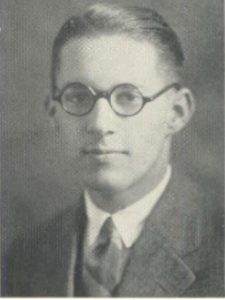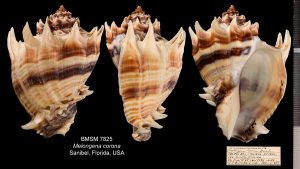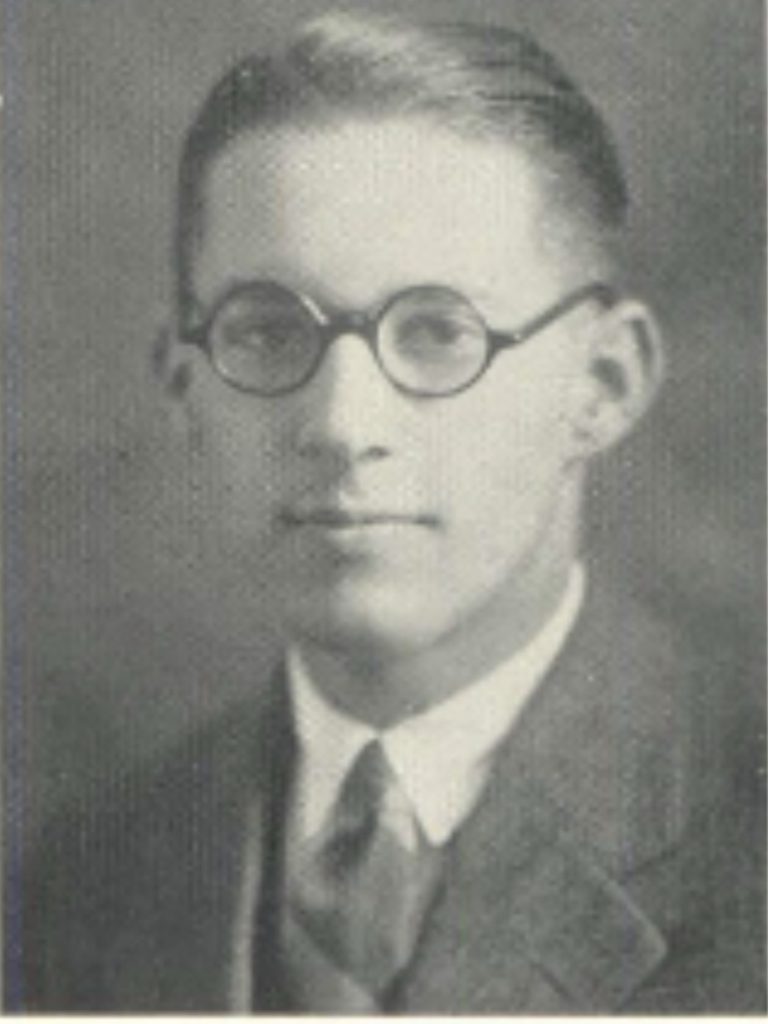(28 August 1905 – 25 November 1982)1,7
William Clifford Brumbach was an all-around naturalist whose interests focused on mollusks and vascular plants. He also documented algae, fungi and lichens. The University of North Carolina at Chapel Hill Herbarium (NCU) curates about 300 vascular plants and 2 algae collected by Mr. Brumbach. As we continue to catalog our collections it is likely that we will find more specimens collected by him.

As of October, 2023, there were about 7,300 herbarium specimens collected by William C. Brumbach cataloged by herbaria across North America including Academy of Natural Sciences (PH: vascular plants), Arizona State University (ASU: vascular plants), Austin Peay University (APSC: vascular plants), AUA (Auburn University: vascular plants), Botanical Research Institute of Texas (BRIT, SMU, NLU, VDB: vascular plants, macroalgae), California Botanical Garden (RSA: vascular plants), Carnegie Museum of Natural History (CM: vascular plants), University of Delaware (DOV; vascular plants), Eastern Kentucky University (EKY; vascular plants), Clemson University (CLEMS: vascular plants), Eastern Michigan University (EMC: vascular plants), Fairchild Tropical Botanic Garden (FTG: vascular plants), Field Museum (F: vascular plants), Florida State University (FSU: vascular plants, macroalgae, lichens), Georgia Southern University (GAS: vascular plants), Harvard Herbaria (A, GH, NEBC, FH: vascular plants, fungi, lichens), The Huntington Library, Art Museum, and Botanical Gardens (HNT: vascular plants), Institute for Botanical Exploration (IBE: vascular plants), Louisiana State University (LSU, NO: vascular plants), Miami University (MU: vascular plants), Michigan State University (MSC: vascular plants), Mississippi Museum of Natural Science (MMNS: vascular plants), Missouri Botanical Garden (MO: vascular plants), Morris Arboretum, University of Pennsylvania (MOAR: vascular plants), New York Botanical Garden (NY: vascular plants, macroalgae), The Pennsylvania State University (PAC: vascular plants), San Diego Natural History Museum (SD: vascular plants), Texas A&M University (TAES: vascular plants), University of Calgary (UAC: vascular plants), Florida Museum of Natural History (FLAS: vascular plants, macroalgae, lichens), University of Georgia, Athens (GA: vascular plants), University of Illinois at Urbana-Champaign (ILL: vascular plants), University of Kansas (KANU: vascular plants), University of Michigan (MICH: vascular plants, macroalgae), University of Minnesota (MIN: vascular plants), University of Nevada (RENO: vascular plants), University of North Carolina at Chapel Hill (NCU: vascular plants, macroalgae), University of South Carolina, Columbia (USCH: vascular plants), University of South Florida (USF: vascular plants, macroalgae), University of Southern Mississippi (USMS: vascular plants) University of Texas, Austin (TEX: vascular plants), University of Wisconsin (WIS: vascular plants), University of Wisconsin, Milwaukee (UWM: vascular plants), West Virginia University (WVA: vascular plants), and The College of William & Mary (WILLI: vascular plants).2,3,4,5
Most of his specimens were collected in either Berks County, Pennsylvania, or in southern Florida.
Mr. Brumbach was a serious student of malacology. The Bailey-Matthews National Shell Museum (Lee County, Florida, USA) curates many specimens collected by Brumbach. “The scientific collection at the Bailey-Matthews National Shell Museum houses many thousands of records of Sanibel and Captiva mollusks and shells. This extensive collection subset provides crucial data for environmental, taxonomic, and historical studies of local mollusks. One important component of that regional sample is the collection amassed by William C. Brumbach. Mr. Brumbach, originally from Pennsylvania and later a part-time resident of Sanibel, was an avid naturalist and citizen scientist, specializing in plants and shells. Mr. Brumbach collected shells on the islands mostly between February 1957 and April 1969. His local collection was not large, comprising 648 lots (specimens of the same species collected at a single collecting event; and for comparison, the entire Museum collection encompasses nearly 130,000 lots.) What it lacked in numbers, however, is more than compensated by the quality of his curation and precise record-keeping. His plant samples may be found in many American herbaria… He was also an enthusiastic horticulturist and a member of the American Daffodil Society, having written The Romance of the Daffodil, published in 1959. The curatorial skills that Mr. Brumbach dedicated to his plant preparations are also embodied in the shell collection. His fountain pen-written labels resemble those found in the best professional collections of his time. Locally, Mr. Brumbach was a member of the Sanibel Captiva Conservation Foundation and the Sanibel Captiva Shell Club. In a Guest Editorial he wrote for The Islander (Sanibel-Captiva newspaper) of March 18, 1965, Mr. Brumbach defended that the local shell show should focus on regional shell collections and studies, a view totally in step with his vast knowledge of Southwest Florida shells and expertise in collecting locally. Prior to the donation to the Museum, the Brumbach Collection was under the care of former Museum board member Mrs. Alice Anders, who completed the donation in 2000.”6

William Clifford Brumbach was born in Berks County, Pennsylvania on 28 August, 1905 to William Dunkel Brumbach (1866-1944) and Edwina Bertolet Jack Brumbach (1869-1951).1 He was baptised on October 8, 1905 in the Schwarzwald United Church of Christ in Reading, Berks County, Pennsylvania.9 At the time of Brumbach’s baptism the church was affiliated with the Lutheran church.8 According to the Franklin and Marshall College 1926 yearbook, Brumbach attended Esterly High School and was earning a B.S. in “Ec. Course” (Economics?) at Franklin and Marshall. “Behold a collegiate man! Bill came to us a perfect student and for two years he struggled for knowledge. Nothing could move him from his work. But as luck would have it, wide trousers became the real thing and these fascinated him, and led him to see that a college education is more than mere book knowledge. Thus taking the usual steps Brummie finally found that “Guilded timbers do worms infold” and woke up, acquiring a weakness for Bacchus and Terpsichore. It is also known that he expects to matriculate at Mercersburg, to be nearer to Penn Hall. He applied his “Markets and Prices” to the Ford market, and he knows all about business.”15 As he is listed as a member of the Junior Class in 1926, he likely graduated from Franklin and Marshall College in 1927.15,16
In 1932 William C. Brumbach married Dorothy M. Raudenbush (1905-1980).1 Together they had two sons: William Henry Brumbach (1935-2009), and Joel J. (b. ca 1944).11,12 Brumbach’s extended family, on both his maternal and paternal sides, had been associated with textile mills in Pennsylvania for several generations.10 The 1940 U.S. Census lists William’s profession as “Asst Superintendent, Woolen Mfg.”, while the 1950 census lists him as “Vice-President, Mfg Woolen Cloth”.12,13
It seems that Brumbach was interested in natural history as a young man. His earliest vascular plant specimen cataloged thus far is Castilleja coccinea (“Eastern Paintbrush”) collected on 5 May 1923 from Berks County, Pennsylvania, “1.8 mi SW of Gouglersville” (PH00351760); he would have been about 18 years old at this time.2 The Academy of Natural Sciences in Philadelphia, Pennsylvania curates a mollusc, Fontigens nickliniana collected by Brumbach in 1931 from Moselem Springs, Berks County, Pennsylvania (ANSP# 160618).14
It is unclear when he started living in Florida for at least part of every year. His shell collections from Sanibel Island begin in 1957, so it’s clear he was at least visiting Lee County Florida by that year.6 Brumbach’s earliest vascular plant collections from Florida are dated March, 1965 (e.g., Thespesia populnea , Brumbach # 5099, 3 March 1965, FL: Lee County: central Sanibel Island, FLAS 97682).2

“Mr. & Mrs. William C. Brumbach, from Reading, spent some time at their cottage on Sunset Bay, where William was gathering local flora and fauna island materials and information to continue writing a new book he expected to finish during the summer of 1963… William was a collector and classifier of daffodils for over 20 years… William C. Brumbach wrote a book “Romance of the Daffodils”.1
William C. Brumbach died on 25 November 1982 and is buried in Fort Myers Memorial Gardens in Lee County, Florida.1
PUBLICATIONS:
Brumbach, William C. 1959. The Romance of Daffodils. Greenwich Book Publishers. 47 pages. (Cornell University Library; catalog SB413.D12 B89)
SOURCES:
1. William Clifford Brumbach. Find A Grave Memorial 5983164. https://www.findagrave.com/memorial/5983164/william-clifford-brumbach accessed on 3 October 2023.
2. SERNEC Data Portal. 2023. http//:sernecportal.org/index.php. Accessed on October 04.
3. MyCoPortal . 2023. http://www.mycoportal.org/portal/index.php. Accessed on October 04.
4. Macroalgal Herbarium Consortium. 2023. https://macroalgae.org/portal/index.php. Accessed on October 04.
5. Consortium of Lichen Herbaria (2023) http//:lichenportal.org/portal/index.php. Accessed on October 04.
6. Leal, Jose H. 2019. The William C. Brumbach Collection. https://www.shellmuseum.org/post/the-william-c-brumbach-collection. Accessed on 4 October 2023.
7. Ancestry.com. Florida, U.S., Death Index, 1877-1998 [database on-line]. Provo, UT, USA: Ancestry.com Operations Inc, 2004. Original data: State of Florida. Florida Death Index, 1877-1998. Florida: Florida Department of Health, Office of Vital Records, 1998.
8. About Schwarzwald UCC: Our History. https://www.schwarzwalducc-pa.org/about-us. Accessed on 6 October 2023.
9. Ancestry.com. Pennsylvania and New Jersey, U.S., Church and Town Records, 1669-2013 [database on-line]. Lehi, UT, USA: Ancestry.com Operations, Inc., 2011. Original data:Historic Pennsylvania Church and Town Records. Philadelphia, Pennsylvania: Historical Society of Pennsylvania. Methodist Church Records. Valley Forge, Pennsylvania: Eastern Pennsylvania United Methodist Church Commission on Archives and History.
10. Brumbach, Albert J. http://www.pagenweb.org/~berks/oldberkssite/books/montgomery/b23.html (page 357). Accessed on 6 October 2023.
11. William Clifford Brumbach. Zimmerman Family Tree. https://www.ancestrylibrary.com/family-tree/person/tree/4670089/person/290054906841/facts. Accessed on 6 October 2023.
12. National Archives at Washington, DC; Washington, D.C.; Seventeenth Census of the United States, 1950; Year: 1950; Census Place: Exeter, Berks, Pennsylvania; Roll: 933; Page: 75; Enumeration District: 6-49. Ancestry.com. 1950 United States Federal Census [database on-line]. Lehi, UT, USA: Ancestry.com Operations, Inc., 2022.
13. National Archives at Washington, DC; Washington, D.C.; Seventeenth Census of the United States, 1950; Year: 1950; Census Place: Exeter, Berks, Pennsylvania; Roll: 933; Page: 75; Enumeration District: 6-49. Ancestry.com. 1950 United States Federal Census [database on-line]. Lehi, UT, USA: Ancestry.com Operations, Inc., 2022.
14. Malacology Collection. The Academy of Natural Sciences Philadelphia.
15. William C. Brumbach, 1926. “U.S., School Yearbooks, 1880-2012”; School Name: Franklin & Marshall College; Year: 1926. Ancestry.com. U.S., School Yearbooks, 1900-2016 [database on-line]. Lehi, UT, USA: Ancestry.com Operations, Inc., 2010. Page 44.
16. The Franklin and Marshall Alumnus. 1944. Volume 20, number 3, page 49.
